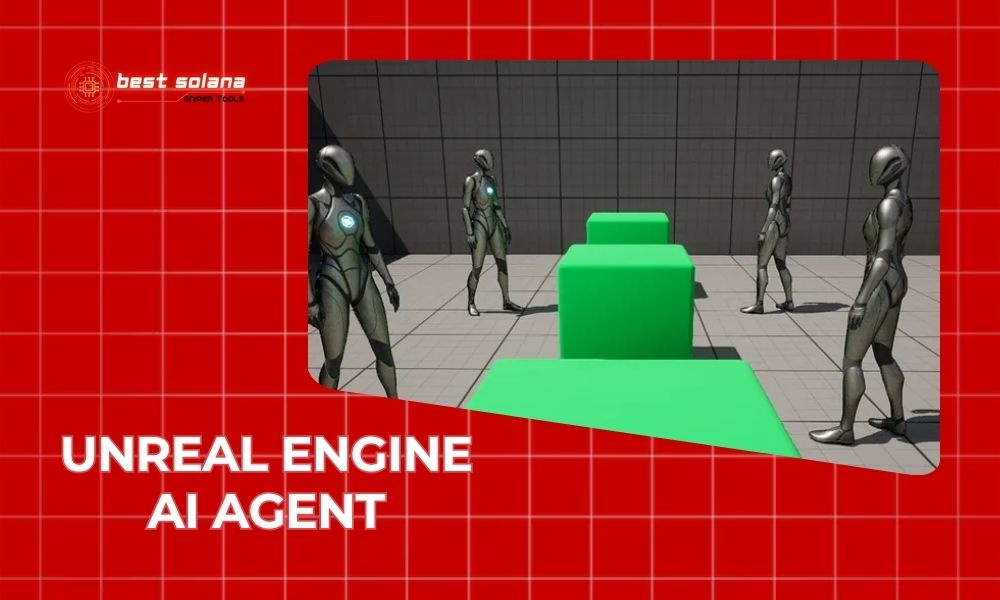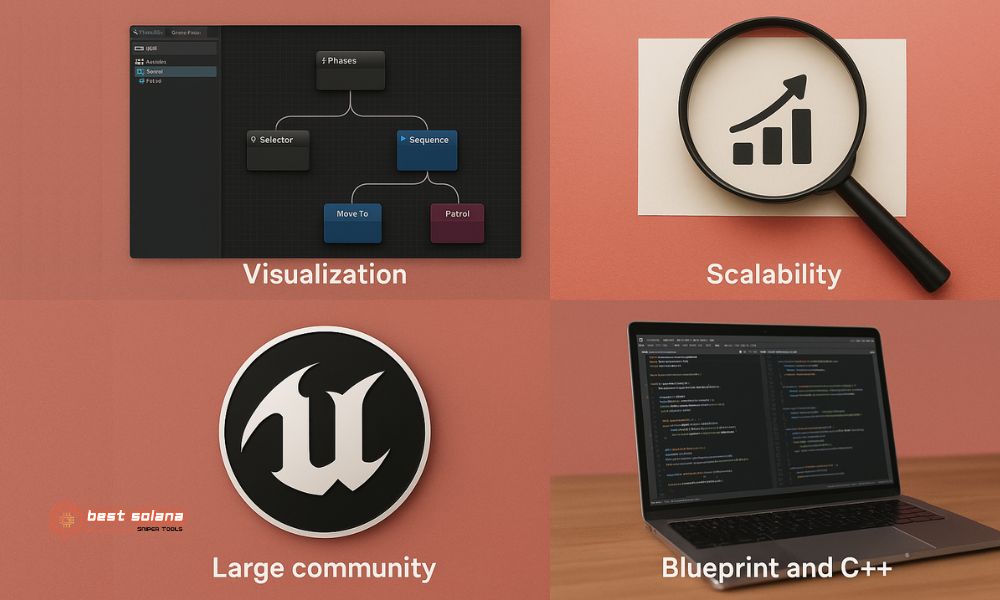Unreal Engine AI agent is a powerful tool that helps game developers breathe life into virtual worlds, creating intelligent non-player characters (NPCs) capable of realistic interaction. Building these AI agents plays a crucial role in enhancing the player experience, offering engaging challenges and compelling narratives, making them a key focus for modern game development.

What is an Unreal Engine AI agent?
An Unreal Engine AI agent is essentially an in-game entity controlled by AI algorithms and logic rather than a human player. They can be lurking enemies, supportive teammates, villagers going about their lives in a city, or any character that needs to exhibit autonomous behavior. The goal of developing an Unreal Engine AI agent is to create characters with believable, challenging, and contextually appropriate behaviors within the game.
Core components for building an Unreal Engine AI agent
Unreal Engine provides several built-in systems to support the creation of a sophisticated Unreal Engine AI agent:
- Behavior Trees: This is a powerful visual tool that allows developers to design complex behavioral logic for AI. A Behavior Tree operates on a tree-like structure where nodes represent tasks, conditions (decorators), or background services. The AI traverses this tree to decide its next action. The use of Behavior Trees makes managing and debugging the logic of an Unreal Engine AI agent significantly easier.
- Navigation System (NavMesh): For an Unreal Engine AI agent to navigate intelligently within the game environment, a navigation system is indispensable. Unreal Engine utilizes NavMesh (Navigation Mesh), a collection of polygons representing walkable areas for AI. The AI uses the NavMesh to find the shortest or most optimal path between two points, avoiding obstacles.
- Perception System: This system allows an Unreal Engine AI agent to “see,” “hear,” or sense other stimuli from the environment, such as the player’s presence, sounds, or other AI agents. Data from the Perception System is used to trigger corresponding behaviors in the Behavior Tree.
- Environment Query System (EQS): EQS is an advanced tool that helps AI agents make decisions based on analyzing their surroundings. For example, an AI can use EQS to find the best hiding spot, a favorable attack position, or a location with necessary resources.
- Blackboard: The Blackboard acts as a “memory” for the AI, storing important data that the Behavior Tree or other AI components can access and modify. Examples include the last known player location, the AI’s current state (patrolling, attacking, retreating), etc.
- AI Controller: This class is responsible for “possessing” a Pawn (a character or object in the game) with AI logic. The AI Controller receives information from systems like Perception, runs the Behavior Tree, and commands the Pawn to perform actions.
Basic process for creating an Unreal Engine AI agent
Set up Pawn and AI Controller: Create a Pawn to represent the AI character and a custom AI Controller to drive it.
- Create Behavior Tree and Blackboard: Design the behavioral logic in the Behavior Tree and define necessary data keys in the Blackboard.
- Configure Perception Component: Add and configure senses for the AI (e.g., sight, hearing).
- Build NavMesh: Ensure the game environment has a NavMesh for AI navigation.
- Connect components: In the AI Controller, launch the Behavior Tree and link it to the Blackboard. Within the Behavior Tree, create tasks, services, and decorators to read/write data from the Blackboard and control the Pawn.
- Test and refine: Continuously test and adjust the parameters and logic of the Unreal Engine AI agent to achieve the desired behavior.
Mastering these tools will help you create intelligent AI agents, contributing significantly to building vivid game worlds that captivate players. Investing in learning and applying AI within Unreal Engine will undoubtedly yield impressive results for any game project.
Benefits of using Unreal Engine to develop AI agents

Powerful and integrated toolset: Systems like Behavior Trees, NavMesh, and Perception are built-in and work well together.
Visualization: Behavior Trees and other tools allow for intuitive and understandable AI design.
Scalability: It’s easy to customize and extend existing AI systems to fit the specific needs of a project.
Large community: The vast Unreal Engine user community provides abundant documentation, tutorials, and support when developing an Unreal Engine AI agent.
Blueprint and C++: Allows AI development using both the Blueprint visual scripting language (suitable for rapid prototyping and simpler logic) and C++ (for performance and complex systems).
In summary, the Unreal Engine AI agent framework provides a comprehensive toolkit for creating sophisticated and engaging artificial intelligence for games. To stay updated with more knowledge and fun memes about game development, don’t forget to follow Best Solana Sniper!
